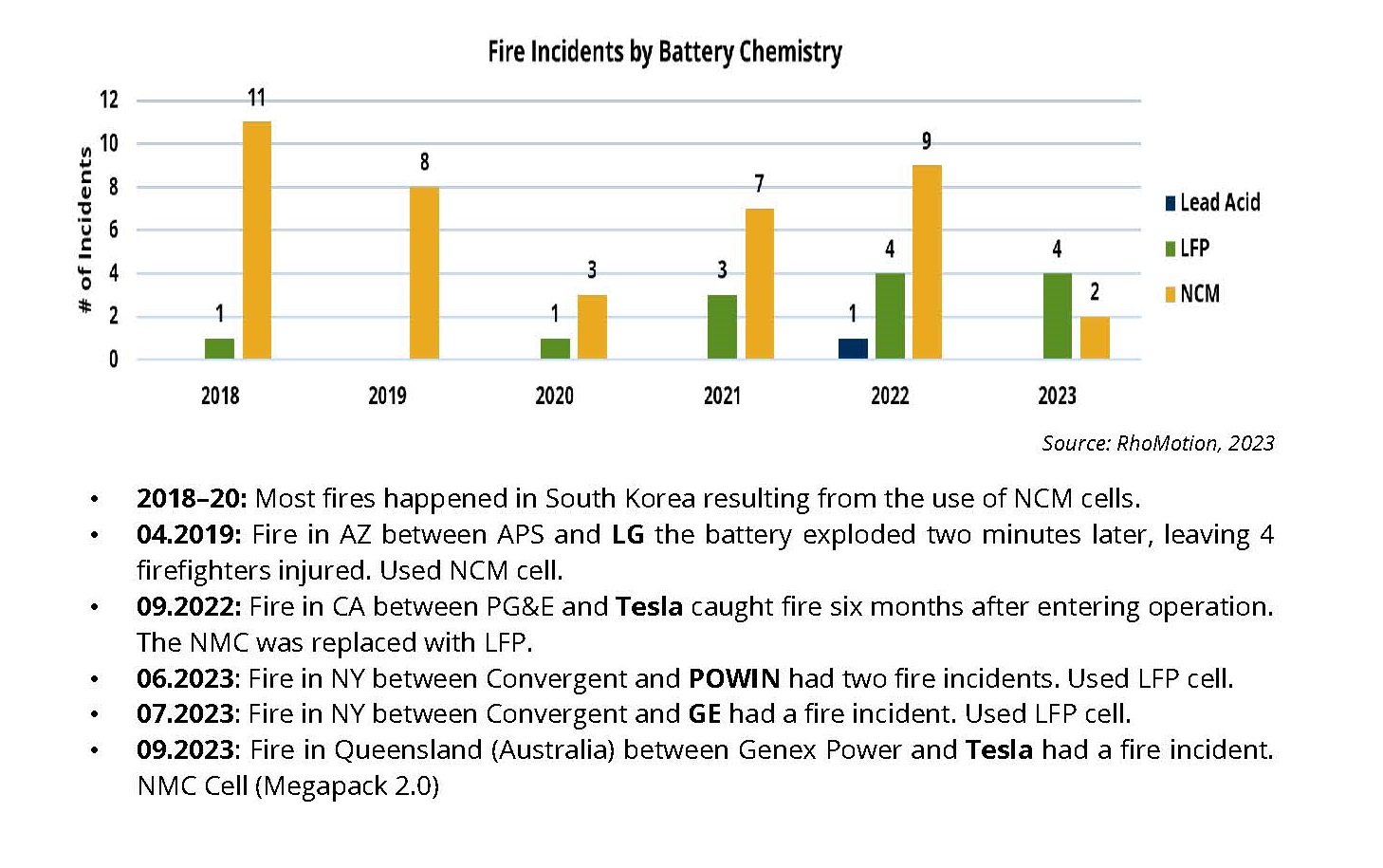Leeward Renewable Energy, a Dallas, Texas-based owner of solar, wind and battery storage projects throughout the U.S., released a report on battery energy storage system (BESS) hazards to highlight causes of thermal runaway incidents and fires in lithium-ion batteries and to place them in context. The study by Thomas Ebel, senior manager of BESS Engineering at Leeward Renewable Energy, examined potential causes of BESS hazards, the effects of different battery chemistry and lessons learned from previous incidents.
The report limits examination to systems operating properly and improperly, and did not factor in mechanical damage from accidents or natural events, such as earthquakes or tornadoes.
BESS hazards under the scenarios examined relate to spikes or short-circuits running through the electrodes from mechanical and/or electrochemical stress inside the cell. According to the report, such stresses tend to result from degradation in the electrolyte over time or improper voltage forced into the battery system. Such events result in excessive heat that can lead to thermal runaway.
The report says that battery chemistry can have a major effect on the frequency, severity and results of voltage events. The authors said different chemistries of lithium-ion battery types may be differentiated by their ratios of cobalt and nickel in their composition. Chemistries with higher amounts of cobalt tend to be more stable but are more expensive. Conversely, chemistries with higher ratios of nickel are less stable but more economical.
The report said: “Unfortunately, due to economic and technical reasons, the latter was the preferred method and the industry had to suffer some unwelcome consequences.”

Subsequent adoption of lithium-ion phosphate (LFP) material in cell cathodes as the industry standard for utility-scale BESS is alleviating thermal runaway problems, the report said. Although LFP designs tend to have lower energy density and thus are larger, and have lower flash points and lower overall heating rates compared to earlier nickel-manganese-cobalt (NMC; also abbreviated NCM) and nickel-cobalt-aluminum (NCA) formulations. LFP-based designs also tend to be less expensive.
Based on events examined in the report, BESS failure incidents fell 97% between 2018 and 2023. This is attributed to safer operating performance of LFP batteries compared with NCM designs and that the former’s lower cost enables operators to equip storage facilities with better detection and fire suppression systems.
The report concludes that a battery management system as well reaching out to fire departments and first responders about BESS installations are important for reducing incidents and limiting their effects.
A number of BESS manufacturers are focusing on battery management system designs and operations procedures for improving safety. In May, Sungrow conducted a fire demonstration to show the thermal containment and response capabilities of its PowerTitan grid storage system. Fluence America said battery management is just a start and that expertise needs to flow readily between suppliers, contractors, operators and first responders to prevent thermal events from making the news and warping public perceptions of lithium-ion battery safety.
This content is protected by copyright and may not be reused. If you want to cooperate with us and would like to reuse some of our content, please contact: editors@pv-magazine.com.









By submitting this form you agree to pv magazine using your data for the purposes of publishing your comment.
Your personal data will only be disclosed or otherwise transmitted to third parties for the purposes of spam filtering or if this is necessary for technical maintenance of the website. Any other transfer to third parties will not take place unless this is justified on the basis of applicable data protection regulations or if pv magazine is legally obliged to do so.
You may revoke this consent at any time with effect for the future, in which case your personal data will be deleted immediately. Otherwise, your data will be deleted if pv magazine has processed your request or the purpose of data storage is fulfilled.
Further information on data privacy can be found in our Data Protection Policy.